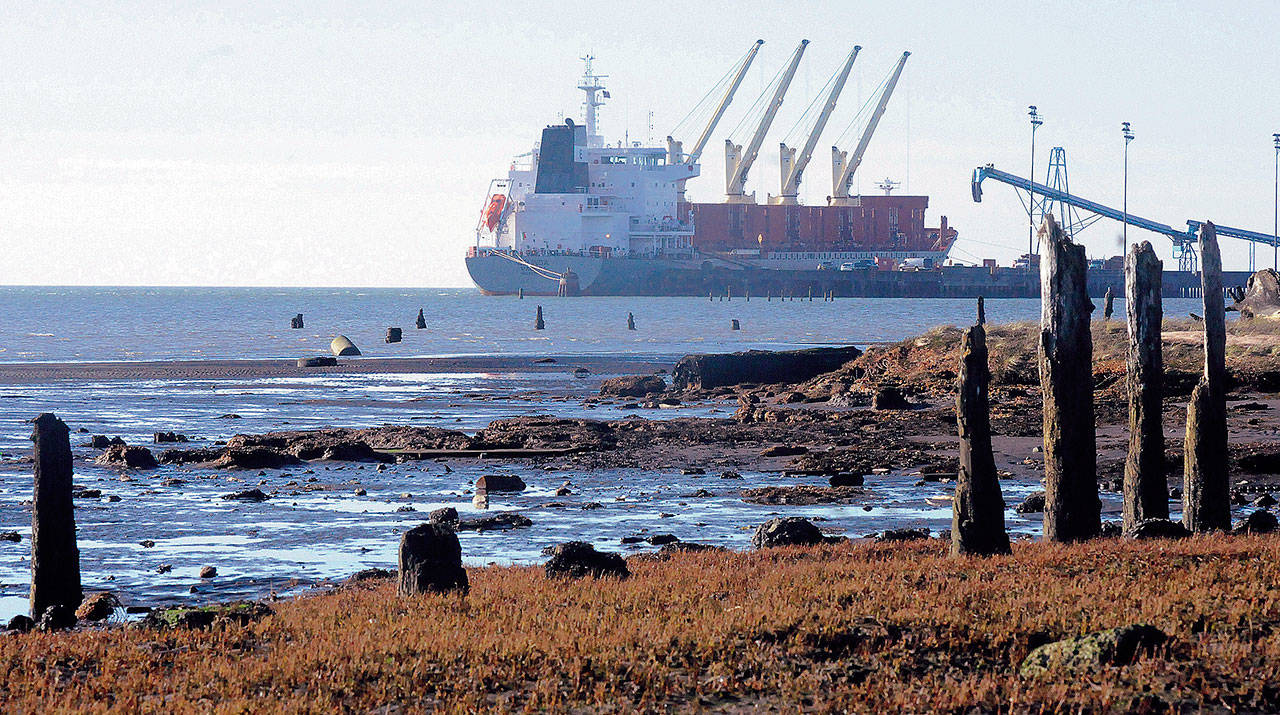The Hoquiam City Council will take a long hard look at the city’s shorelines permit application fee structure after hearing testimony Monday from Port of Grays Harbor Executive Director Gary Nelson that the current structure making the city look unfriendly to larger projects.
When BHP, the company behind a proposed potash shipping and storage facility at the Port of Grays Harbor, submitted a letter to the City of Hoquiam expressing disappointment with the $400,000 price tag for their shorelines permit application, the Hoquiam City Council sent the matter to its Regulatory Committee. On Monday, the committee report was submitted to the council, recommending the city “adhere to the shoreline fee as stated in resolution 2010-28.”
A motion to adopt the report and a second came immediately, but Councilman Ben Winkelman was quick to echo the testimony earlier in the meeting from Nelson, saying if the city is serious about attracting large businesses and projects, the fee structure should be addressed.
“We have a long legacy of industrial use on our waterfront,” said Nelson. “Look past the BHP application and reaffirm the goals of the city and the Port.”
Nelson said the existing fee structure based on a percentage of the total cost of a project, which unfairly punishes larger scale projects. The current structure fee is $7,000 for the first million and $1,000 for each following million. When a $440 million project like BHP’s, the costs to the developer can be well above the costs incurred when considering the permit application.
“I think we need to take more input from the Port and other stakeholders,” said Winkelman. “The city shouldn’t be making money on the fee, it should just be used to cover the costs associated with the application. This is a large project we’re hoping to get here.”
Mayor Jasmine Dickhoff then did something she rarely does: she inserted herself into the debate and made a suggestion as to how to proceed.
“It’s worth noting there are options how we go forward from here,” she said. “We could have the (Association of Washington Counties) come in, get public input. What I’m hearing is there’s the feeling Hoquiam is being seen as unfriendly to large projects.”
She recommended the council vote to reject the committee report and send it back to the Regulatory Committee to set up a hearing. The council unanimously agreed.
After the meeting, City Administrator Brian Shay explained the thinking process behind the original 2008 fee structure resolution.
“When the city established the fee resolution back in 2008 that was patterned after other similar shorelines jurisdictions with port facilities, we did not envision a $400 million project. Most of the time, projects have a much lower project construction value and the resulting permit fee is more in line with our staff time and expenses.”
BHP has asked the city to cap project costs at $100 million, bringing the fee down to a more manageable $100,000, and also ask the cost of a consultant to review the application – usually absorbed by the company and not included in the fee, be rolled in to that $100,000.
“BHP’s proposal to put a limit on our permit fee based on a maximum $100 million in project value makes sense,” said Shay.
Winkelman said the current fee structure discouraged the large-scale development that the region needs to boost the economy.
“I think it’s counterproductive to our goal of attracting new businesses. It punishes the big projects and encourages mostly small-scale investment,” he said. “I would hate for that (fee structure) to be a factor in discouraging more projects here.”


